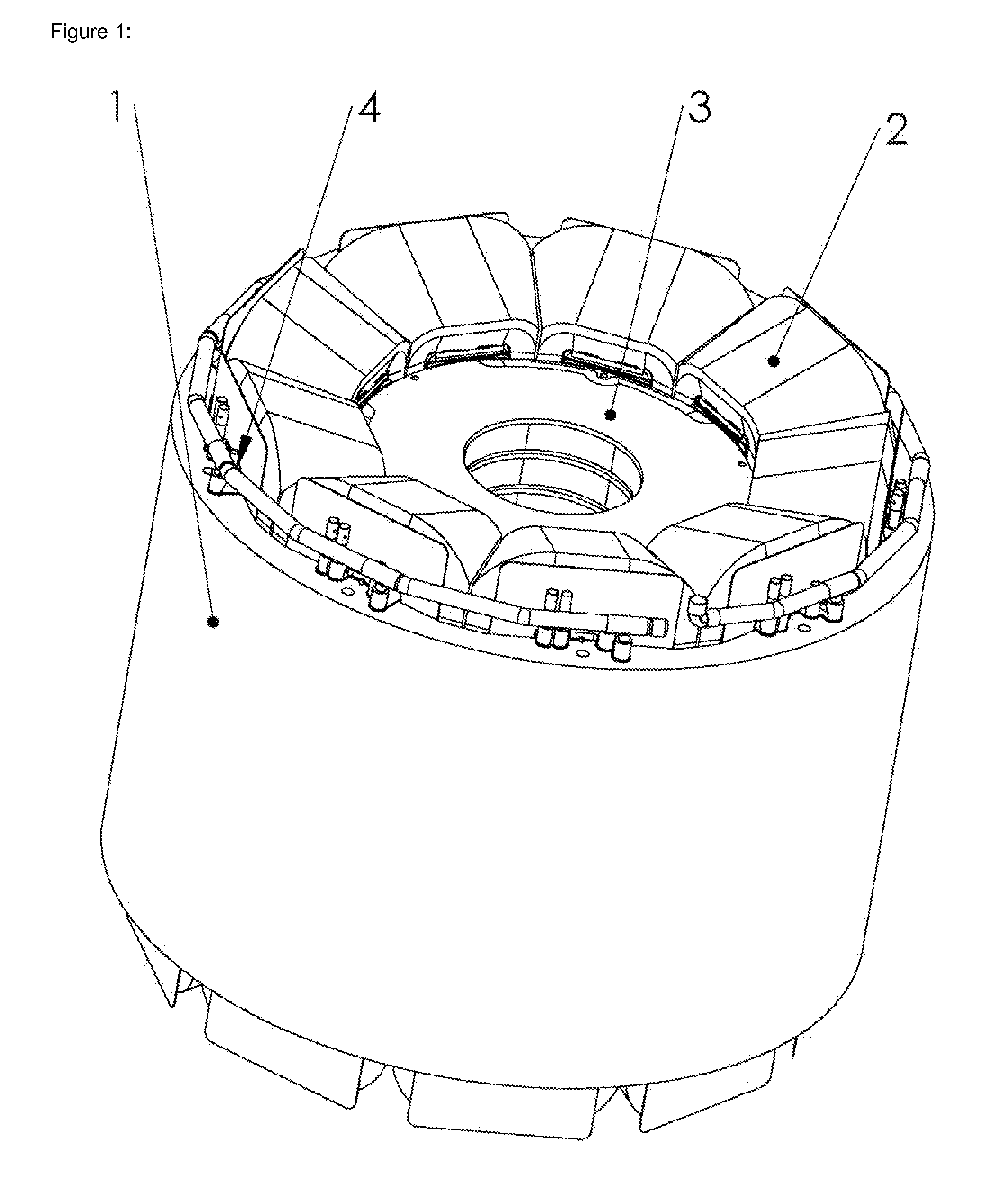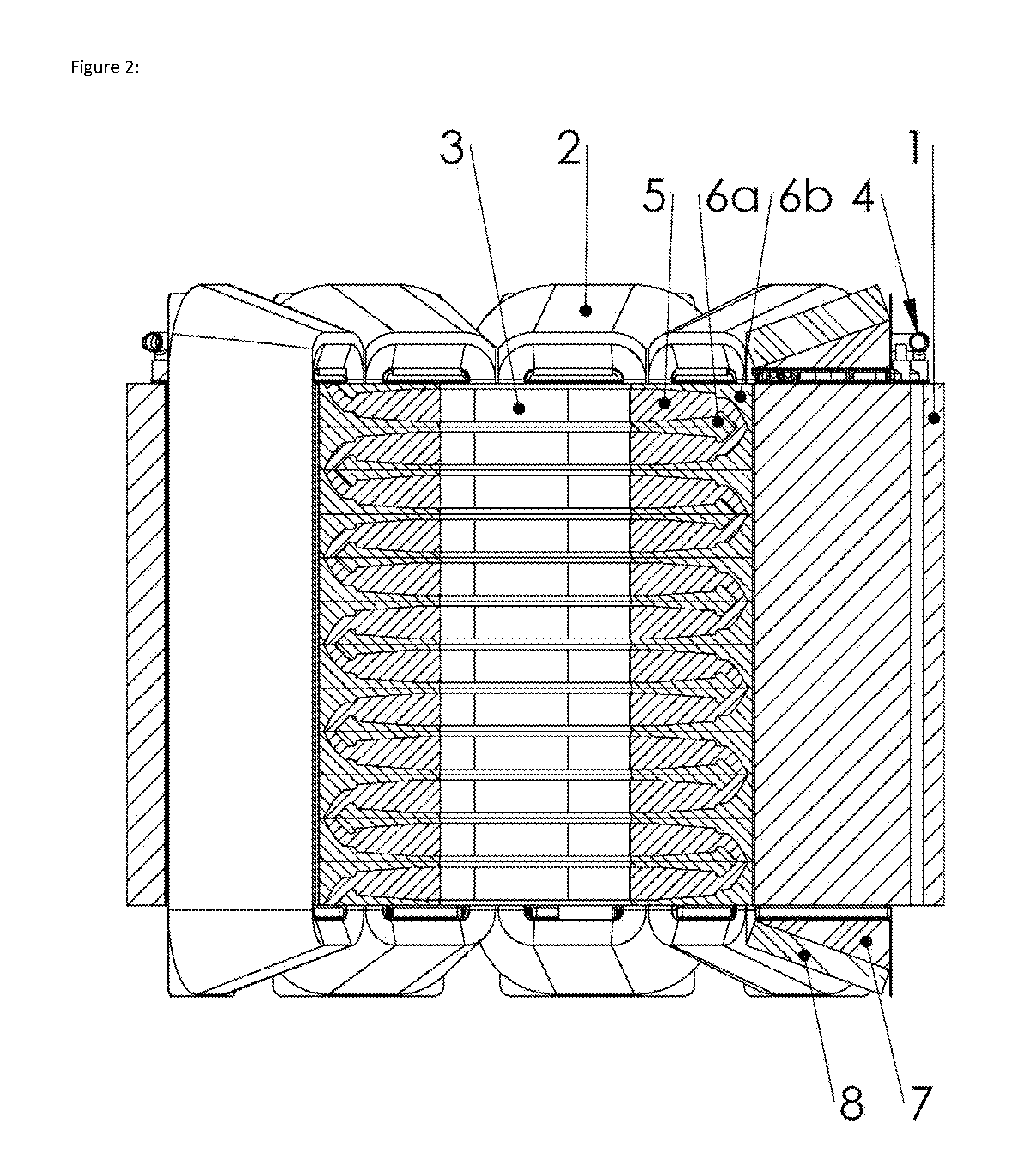Liquid cooled high efficiency permanent magnet machine with in slot glycol cooling
- Summary
- Abstract
- Description
- Claims
- Application Information
AI Technical Summary
Benefits of technology
Problems solved by technology
Method used
Image
Examples
Embodiment Construction
[0031]Referring particularly to FIG. 1, a rotor 3 is shown surrounded by a stator lamination 1 and stator coils 2. Also shown is a fluid manifold 4 for supplying coolant to the motor or generator.
[0032]FIG. 2 shows more detail on the rotor configuration showing magnets 5 and tab pole plates 6a and 6b. This rotor configuration is the same as shown in the two patent applications Ser. No. 13 / 438,792 and Ser. No. 13 / 438,803 filed on Apr. 3, 2012, and each incorporated herein by reference.
[0033]The stator shown in FIG. 3 has a double layer concentrated winding since there is a winding around every stator tooth. In addition, the stator winding has an inner portion 7 and an outer portion 8 as shown in FIG. 3 and FIG. 4. The inner and outer portions are separate and distinct from this being a double layer winding which refers to there being a winding around every stator tooth.
[0034]The winding surrounds a cooling manifold 9 as shown in FIG. 4. There are 2 redundant coolant loops denoted as ...
PUM
 Login to View More
Login to View More Abstract
Description
Claims
Application Information
 Login to View More
Login to View More - R&D
- Intellectual Property
- Life Sciences
- Materials
- Tech Scout
- Unparalleled Data Quality
- Higher Quality Content
- 60% Fewer Hallucinations
Browse by: Latest US Patents, China's latest patents, Technical Efficacy Thesaurus, Application Domain, Technology Topic, Popular Technical Reports.
© 2025 PatSnap. All rights reserved.Legal|Privacy policy|Modern Slavery Act Transparency Statement|Sitemap|About US| Contact US: help@patsnap.com



